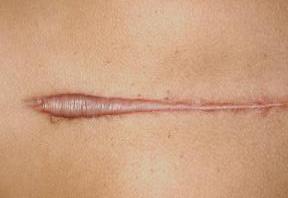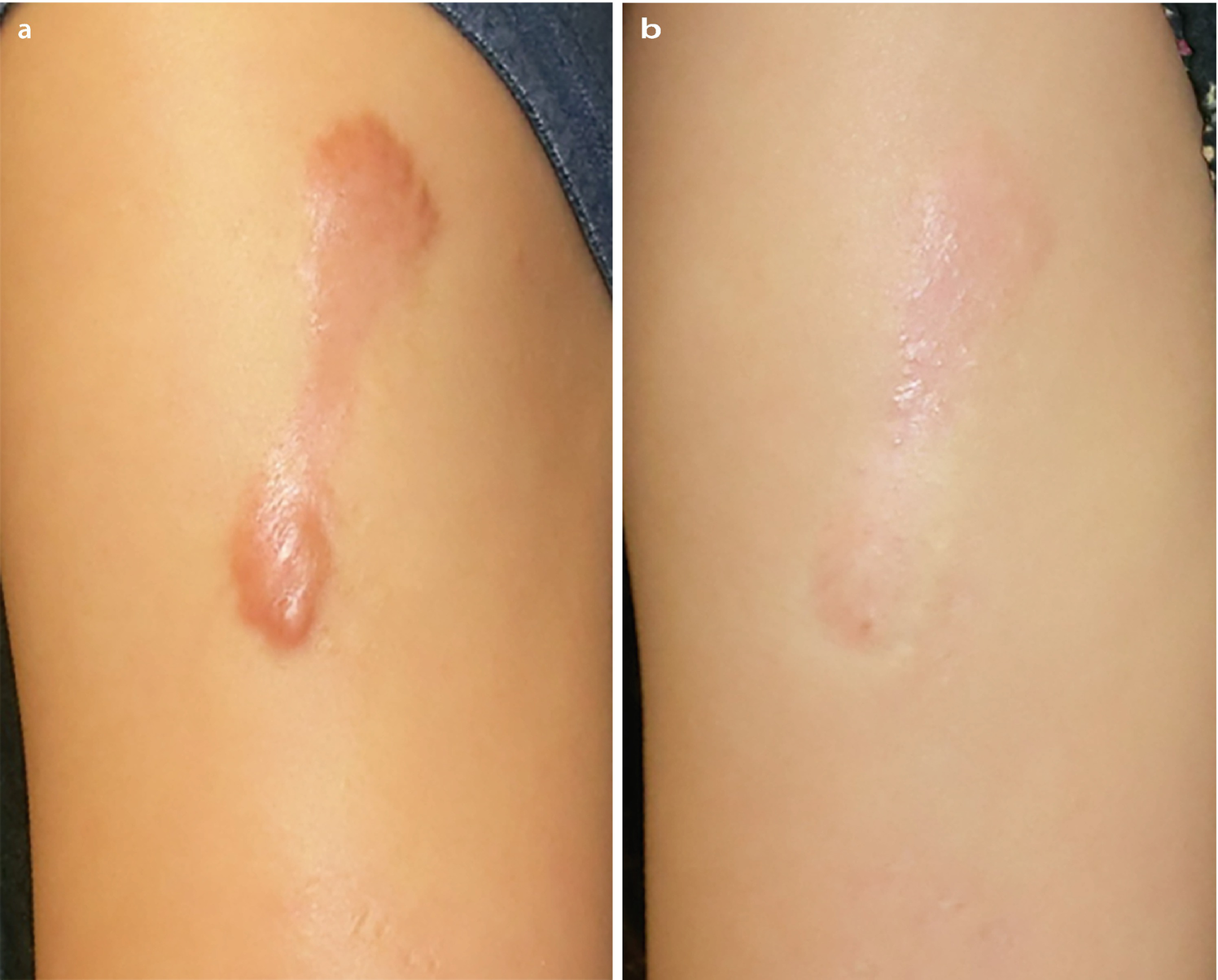Keloids & hypertrophic scars are ugly elevated scars formed after injury or surgery. Intralesional injections, cryotherapy & lasers are used for correcting this disabling condition.This has to be treated at the earliest for better outcome.
A keloid scar is a raised scar that forms as a result of injury or wound or trauma on the skin or where the skin has healed after a wound. In some cases, this type of scar may occur after piercing.
A keloid is an overgrowth of fibrous tissue, called fibroblasts that produce an excessive amount of Trusted Source collagen which in turn results in the development of a keloid scar.
Usually, these scars develop 3 –12 months after the injury. They can be pink, red, purple, or brown and mostly become darker over time. The texture of these scars can differ such as soft and doughy or hard and rubbery. The appearance of the keloids depends on the location of their formation, as well as the skin tone of the individual.

Following are the symptoms that a person with a keloid scar may experience:
● itchiness
● pain
● tenderness
Keloids form inside the scar tissue. Generally, collagen is used to repair the injury by overgrowing in this area,
sometimes it produces a lump of tissue that is many times larger than the original scar.
Even though these scars usually
form at the place of an injury, they can also develop spontaneously.

A thick tissue grows in the damaged area, making the scar bigger than the injury is called a keloid. They can develop where the skin is injured, such as a burn, chickenpox, a surgery cut, a piercing, or acne. In some cases, even a scratch can result in keloids.
There are various options available for the Keloid scar removal process, but it is always best to consult an experienced dermatologist to get the best treatment to remove this raised scar.
● Corticosteroid injection
● Freezing the scar (CRYOTHERAPY): This type of treatment option is called cryotherapy which can be used to reduce the size and the hardness of the keloid scar.
● Gels and sheets: Applying a gel or wearing silicone sheets over the scar can help to flatten the keloid scar.
● Laser Treatment
● Surgical Removal
● Pressure treatment.
● A cyst should be removed when there is pain, discomfort has grown bigger in size over time, or contains malignant tissue or an infection or confidence issues.
● In these situations, it's always good and very necessary to remove a skin cyst as soon as possible to avoid further health discomforts.
● In most cases, the cyst removal technique isn't really necessary unless you're facing discomfort with it.
● Once the cyst is removed by treatment, it’s very important to test the cyst to confirm that it is not cancerous.

Among all injections, steroid injections that are used for keloids removal treatment can be painful, especially if the scar is hard and rubbery. Usually, local anaesthesia is used to comfort the patient’s discomfort, or sometimes a topical numbing medication is used along with the local anaesthesia if the patient is more sensitive to injections.
Cryotherapy is the best at correcting keloid scars, especially on small keloids.
Having a few cryotherapy therapies before (or after) getting injections of corticosteroids can reduce the keloid size.
So always a combination therapy is used to correct keloids

Yes keloids are permanent scar tissue & they selsom regress in size. The keloid may continue to grow if you didn't take any needed treatment. Hence, it is always good to seek advice from a dermatologist, that too in a situation like if you are experiencing any symptom of an infection.
At Dr. Madhu's Skin and Hair Clinic, our doctor is well experienced in managing keloids & hypertrophic scar where you can remove the scar without any troubles and ills. So, what you’re waiting for, call us and fix up an appointment today.